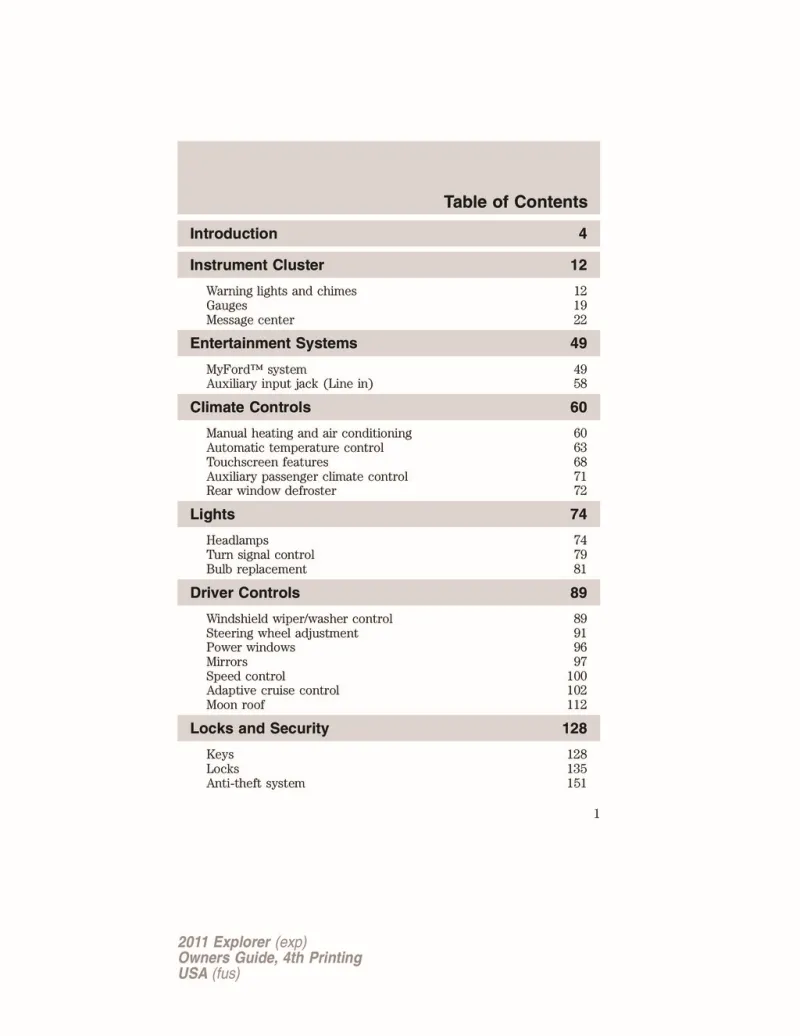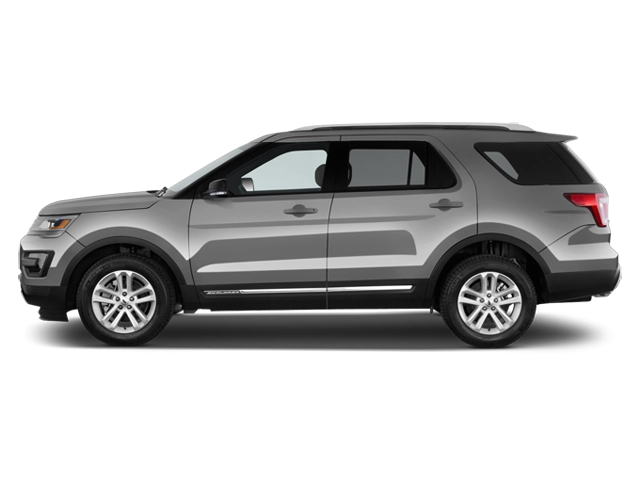2011 Ford Explorer Owner's Manual

Table of Contents
2011 Ford Explorer Overview
Introduction
The 2011 Ford Explorer redefines the modern SUV, blending rugged charisma with refined comfort. This model, a part of Ford's celebrated lineup, boasts a more car-like ride and advanced technology, catering to families and adventure-seekers alike. With a striking exterior design and spacious interior, the 2011 Explorer stands out on the road as a versatile vehicle for everyday use and weekend getaways.
Powertrains
The 2011 Ford Explorer offers two robust powertrains to suit differing needs. The standard engine is a 3.5-liter V6, delivering 290 horsepower and 255 lb-ft of torque, providing a smooth balance of performance and fuel efficiency. For those desiring enhanced capability, an optional 2.5-liter I4 turbocharged EcoBoost engine is available, delivering similar power while also improving gas mileage and reducing emissions. Coupled with Ford's six-speed automatic transmission, the Explorer ensures responsive handling and a pleasant driving experience.
Trims
Available in various trims, including XLS, XLT, and Limited, the 2011 Explorer caters to diverse tastes and budgets. The XLS serves as an entry-level option with essential features, while the XLT adds modern conveniences, such as a premium audio system, and enhanced interior materials. The Limited trim offers a luxury experience with premium leather seating, advanced infotainment options, and additional safety features, ensuring every ride is as sophisticated as it is functional.
Features
Equipped with the latest technology, the 2011 Ford Explorer comes standard with features such as Bluetooth connectivity, a touchscreen interface, and the innovative MyFord Touch system for easy access to navigation and entertainment. Advanced safety systems, including front and side airbags, stability control, and rear parking sensors, make for a secure driving experience for passengers of all ages.
Owners Manual
The 2011 Ford Explorer's owner's manual serves as an essential guide for new owners, providing comprehensive information on vehicle operation, maintenance, and troubleshooting. It includes insights into various features, safety recommendations, and scheduled service intervals, ensuring that drivers can make the most of their SUVs while keeping them in peak condition.
User manual download
The Ford Explorer owner manual for the 2011 model year is to be found in PDF downloadable format on this page. The owner manual for the model year 2011 is free and in English, but the repair manuals are usually not easy to get and may cost more.
Manual Questions
Fill the form below and someone will help you!

